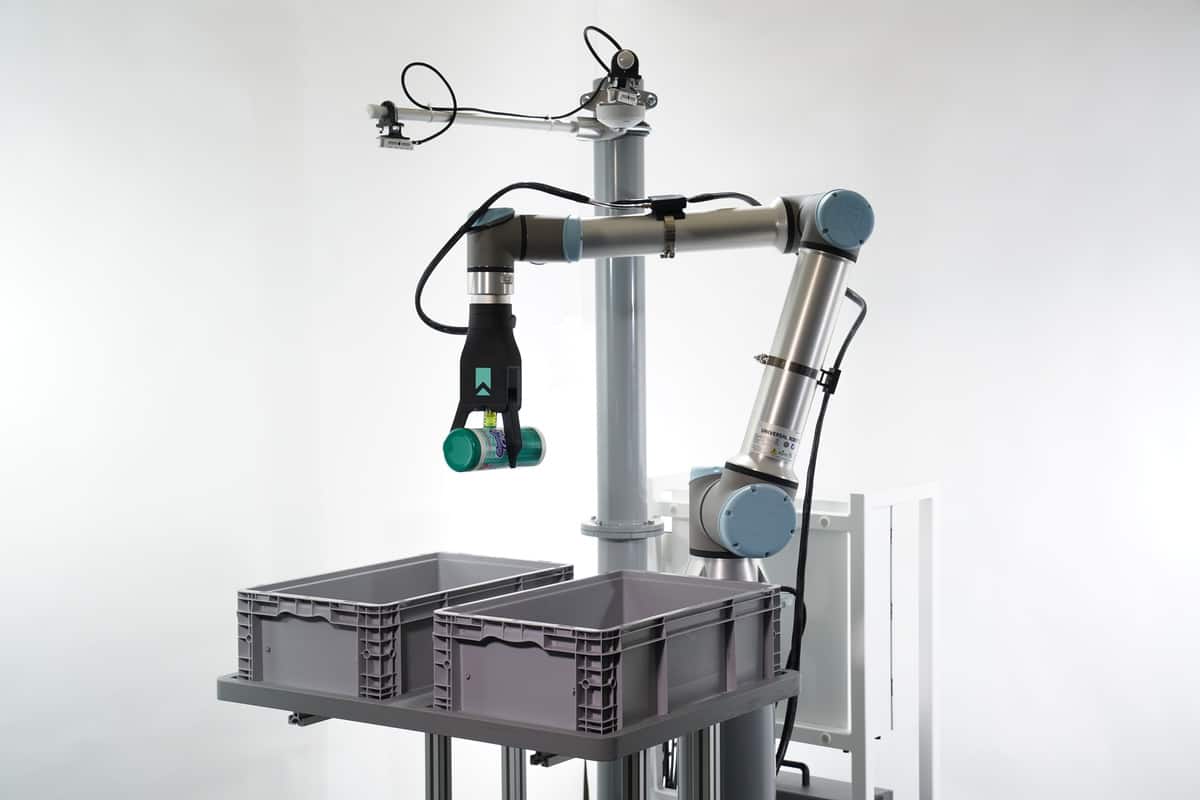A “piece-picking” solution from RightHand Robotics and Intel RealSense Technologies automates a warehouse process that has come to define the e-commerce era: the need to pick single items individually at an increasingly rapid pace.
In the not-too-distant past, most retail orders fulfilled by warehouses were fairly straightforward — distribution centers shipped products in bulk to stores, where shoppers handpicked the items they wanted.
But as more people purchase (single) items online, that picking task has fallen to distribution center employees. They stand all day, picking items one at a time, scanning the bar code and tossing the product in a conveyor before starting the process all over.
The work is mind-numbing, inefficient and difficult to scale. “But like a switchboard operator 50 years ago, the only way to connect the flows in warehouses is if someone matches things together one item at a time,” says Vince Martinelli, director of product and marketing for RightHand Robotics, a Somerville, Massachusetts-headquartered startup that launched publicly in 2017.
Or rather, it used to be the only way to connect warehouse flows. In the past few years, new robotic solutions have descended on warehouses, replacing not only humans but the typical fixed factory robots that retailers and manufacturers have been using for years.
Like humans, the new crop of robots come in all shapes and sizes and perform a variety of tasks. What many of the robots have in common is their smarts, animated by artificial intelligence software and machine learning that enable the devices to understand, interact with and learn from their environments.
Taking on the e-commerce picking and sorting challenge is RightHand Robotics’ RightPick2, a second-generation piece-picking device that combines a “smart gripper” with computer vision to pick and reliably place thousands of items at high speeds, Martinelli said. The product, unveiled last year, was highlighted in a case study released by Intel RealSense on Monday.
“The vision system provides the eyes for the system,” explained Martinelli, noting the cameras allow RightHand’s software and AI to assess the scene and make decisions about how to move the robot arm (from Danish manufacturer Universal Robotics) to grab one of those items. Data from the cameras, according to the case study, allows the robot to distinguish among objects in a bin, recognize their location and avoid collisions as it retrieves the object.

Each pick is different from the one that came before it, Martinelli said. “So even though it looks like the robot is just putting things from here to there, none of these picks can be pre-programmed. There are a lot of perceptive and cognitive things going on in these machines.”
With RightPick2, a single warehouse worker can supervise and manage a fleet of half a dozen robots or more, picking and placing 900 items per hour, according to the company.
RightHand claims customers in Japan, Europe and the United States. It has raised $23 million from investors Menlo Ventures and Google Inc.
As the camera systems continue to evolve, so will RightPick and its capabilities, said Martinelli, likening the visiual apparatus to contact lenses: “It changes how the machines see the world.”
Continuing a series of analogies, he said an autonomous robot picking items in a warehouse is to a factory robot what a self-driving vehicle is to a regular car. On the surface, you can’t necessarily tell robots or cars apart, Martinelli observed.
“However, one of them is a 100% deterministic human-controlled machine, and the other is receiving, thinking and acting on their own.
“It’s a huge difference, night and day.”
Related stories:
Mobile robots feed warehouse demand for adaptability











